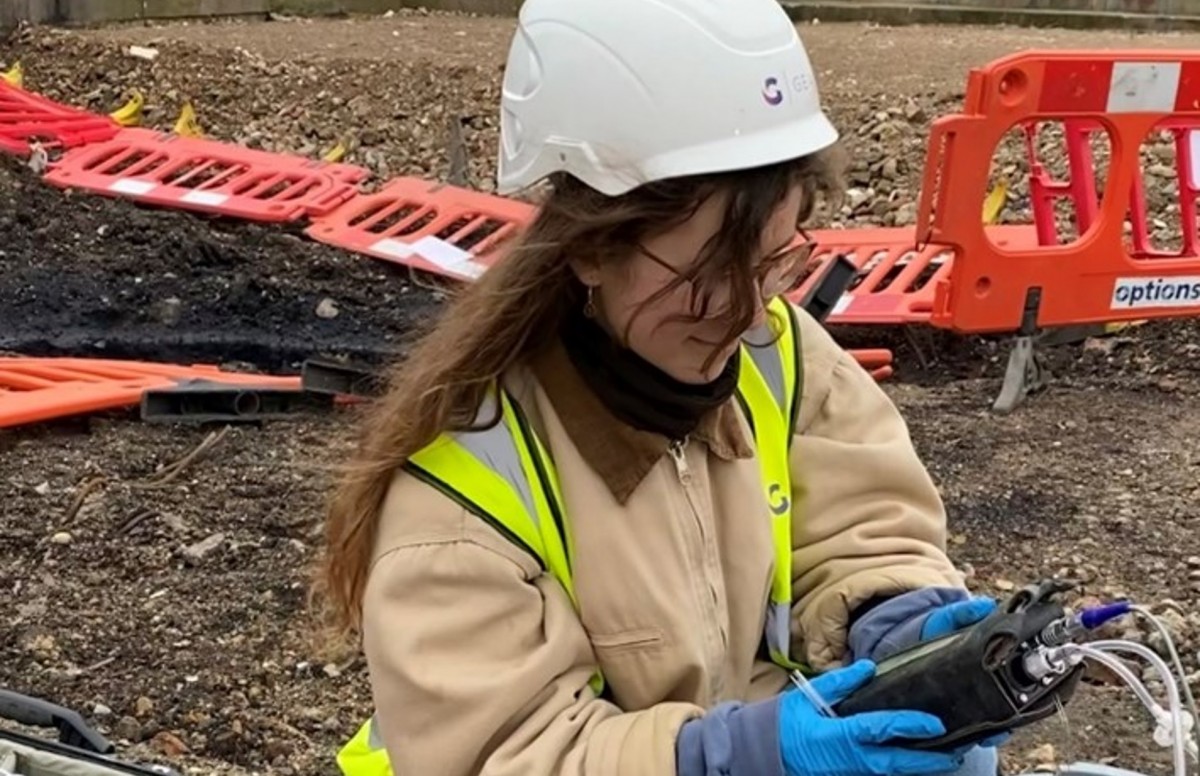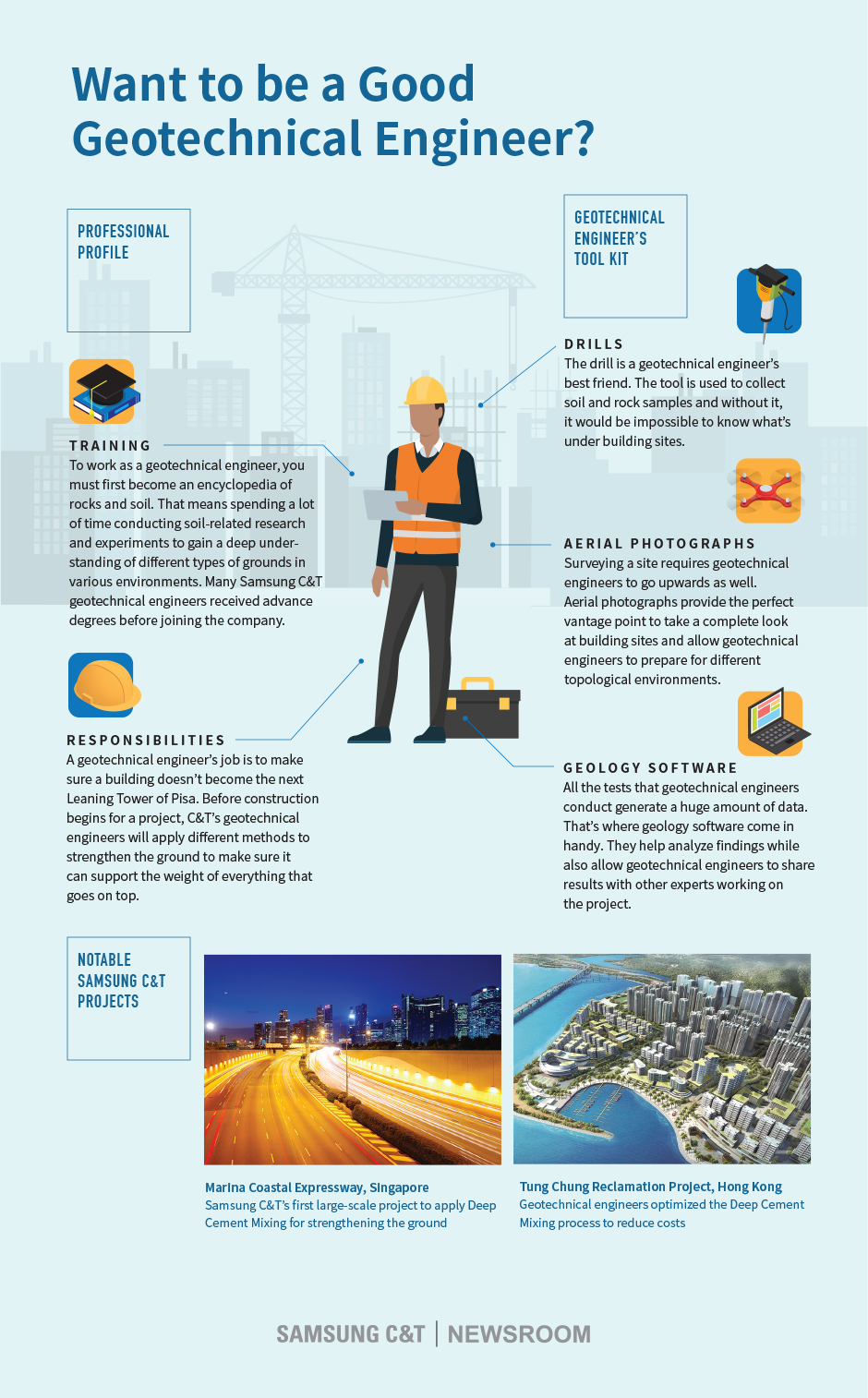How Geotheta can Save You Time, Stress, and Money.
How Geotheta can Save You Time, Stress, and Money.
Blog Article
Indicators on Geotheta You Should Know
Table of ContentsWhat Does Geotheta Do?The Facts About Geotheta UncoveredGetting My Geotheta To WorkGeotheta for DummiesSome Known Incorrect Statements About Geotheta

They carry out site examinations, collect examples, perform laboratory examinations, and assess data to evaluate the viability of the ground for building and construction tasks - Consulting Engineers. Based on their searchings for, geotechnical engineers offer recommendations for structure design, incline stability, retaining structures, and mitigation of geotechnical threats. They collaborate with other experts, such as architects, structural designers, and building teams, to make sure that geotechnical factors to consider are incorporated right into the overall project layout and implementation
By analyzing the actions and residential or commercial properties of dirt and rock, they can recognize potential geotechnical hazards such as landslides, dirt negotiation, or incline instability. Their expertise aids avoid failures or mishaps that might endanger lives and residential property. Right here are some in-depth duties and duties of a geotechnical designer: Website Investigation: Geotechnical engineers conduct site investigations to collect data on subsurface conditions.
They interpret the data to recognize the properties and actions of the soil and rock, including their toughness, leaks in the structure, compaction attributes, and groundwater problems. Geotechnical Evaluation and Style: Geotechnical engineers assess the data gathered during site investigations to evaluate the security and viability of the site for building projects. They perform geotechnical calculations and modeling to assess elements such as birthing capability, settlement, incline security, side earth stress, and groundwater flow.
Some Known Details About Geotheta
Structure Design: Geotechnical designers play an essential role in developing structures that can safely support the desired framework. They examine the dirt problems and tons needs to determine the proper structure kind, such as shallow structures (e.g., grounds), deep foundations (e.g (http://peterjackson.mee.nu/where_i_work#c2299)., stacks), or specialized methods like soil improvement. They think about aspects such as settlement limits, birthing capability, and soil-structure interaction to develop optimum foundation layouts
They review building strategies, display site tasks, and conduct field assessments to verify that the layout referrals are complied with. If unexpected geotechnical concerns arise, they examine the situation and give suggestions for remediation or changes to the layout. Danger Evaluation and Mitigation: Geotechnical designers assess geotechnical threats and dangers associated with the project site, such as landslides, liquefaction, or soil erosion.

Collaboration and Interaction: Geotechnical designers function very closely with other professionals entailed in a project, such as engineers, structural engineers, and building groups. Reliable interaction and partnership are essential to incorporate geotechnical considerations into the overall job design and construction procedure. Geotechnical designers provide technical know-how, answer questions, and guarantee that geotechnical needs are met.
6 Simple Techniques For Geotheta
Below are some kinds of geotechnical engineers: Foundation Designer: Foundation engineers concentrate on developing and examining structures for frameworks. They examine the dirt problems, lots requirements, and website characteristics to figure out the most proper structure type and design, such as shallow structures, deep foundations, or specialized methods like stack structures.
They review the factors influencing slope stability, such as dirt homes, groundwater problems, and incline geometry, and establish techniques to avoid slope failings and minimize risks. Earthquake Designer: Quake designers specialize in assessing and developing frameworks to stand up to seismic pressures. They analyze the seismic web threat of a site, assess soil liquefaction potential, and create seismic design criteria to ensure the security and resilience of frameworks during earthquakes.
They perform area testing, collect samples, and assess the collected information to characterize the dirt buildings, geologic formations, and groundwater conditions at a website. Geotechnical Instrumentation Engineer: Geotechnical instrumentation engineers concentrate on monitoring and determining the actions of dirt, rock, and structures. They install and keep instrumentation systems that monitor elements such as dirt settlement, groundwater degrees, slope movements, and structural variations to evaluate performance and provide very early warnings of potential problems.
7 Simple Techniques For Geotheta
They perform tests such as triaxial examinations, combination examinations, straight shear examinations, and permeability examinations to gather information for geotechnical evaluation and design. Geosynthetics Designer: Geosynthetics designers focus on the layout and application of geosynthetic materials, such as geotextiles, geogrids, and geomembranes. They utilize these materials to enhance dirt stability, strengthen inclines, give drain services, and control erosion.
They tend to be investigatory people, which means they're intellectual, reflective, and inquisitive. They are interested, systematic, logical, analytical, and rational. Some of them are likewise social, implying they're kind, generous, cooperative, client, caring, helpful, empathetic, sensible, and pleasant - Consulting Engineer.
In the workplace atmosphere, geotechnical engineers utilize specialized software application tools to carry out calculations, create styles, and evaluate data. They prepare records, testimonial job requirements, communicate with customers and staff member, and coordinate project activities. The office setup provides a conducive atmosphere for research, evaluation, and partnership with various other experts included in the task.
Get This Report about Geotheta
They often see job sites to carry out website investigations, analyze geotechnical problems, and gather data for evaluation. These brows through include taking a trip to different places, occasionally in remote or challenging surfaces. Geotechnical engineers might perform dirt sampling, conduct tests, and monitor building tasks to make certain that the geotechnical elements of the job are being implemented appropriately.
Geotechnical designers also work in specialized geotechnical labs. Geotechnical lab designers work extensively in these environments, managing testing devices, operating tools, and videotaping information.
Report this page